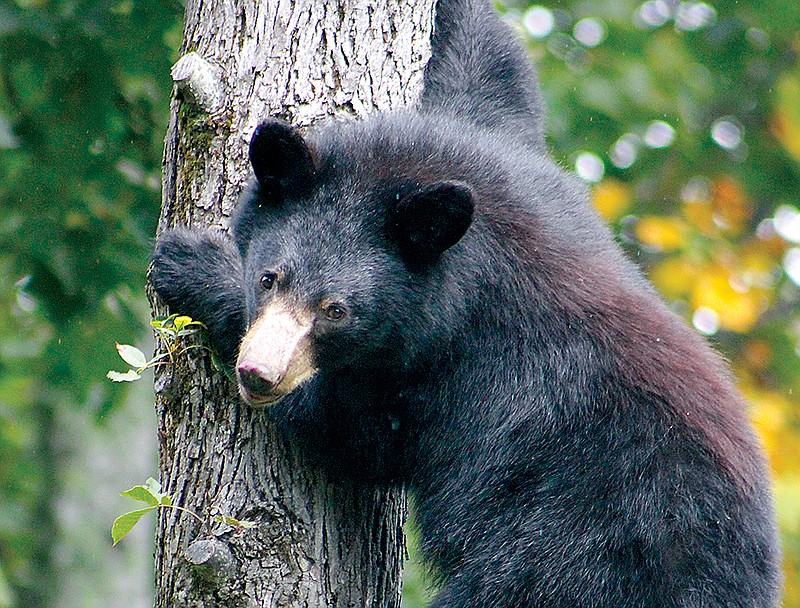It's every hiker's nightmare and yet, simultaneously, every hiker's desire: to spot a bear on the trail.
And it's certainly not impossible around these parts. The black bear is North America's most widely distributed bear species, and the Great Smoky Mountains have one of the largest populations in the U.S. with an estimated 1,500 bears, equaling about two per square mile.
Though their range is being constricted due to habitat loss, black bear populations are actually growing, which, according to the Tennessee Wildlife Resources Agency, is due to conservation and management efforts.
High-risk Behaviors
Black bear attacks are rare, but according to TWRA, there are a number of behaviors for which a black bear would be considered high-risk. These include:— Causing property damage.— Entering a vehicle.— Becoming habituated to human food.
Because of their growing populations, shrinking habitats and, thus, the increase in human-bear interactions, black bears are becoming more and more accustomed to human presence - which makes them at greater risk for being euthanized when something goes wrong.
As bears begin to leave their winter dens later this month, your chances of an encounter could increase. To help protect yourself and the bear, here is everything you need to know about one of Tennessee's most iconic species.
Description
The American black bear (Ursus americanus) is a medium-size bear, usually black with a brown muzzle and often with a white patch on its chest. Adult black bears can weigh anywhere from 180-550 pounds, smaller than both brown bears and grizzly bears, a subspecies of the brown bear, which can weight between 350-1,000 pounds.
Black bears may be the smallest of American bear species but that doesn't mean they're wimpy. A black bear can flip a 300-pound boulder with a single paw. And despite their bulky size, black bears can run up to 30 mph in short sprints.
Diet
Bears will eat almost anything. They fill up on fruit, nuts and vegetation, but will also supplement their diet with fish and small mammals, making them omnivores - and opportunists. Be mindful of your trash. As they say in Great Smoky Mountains National Park, "a fed bear is a dead bear," meaning the animals often have to be euthanized after becoming habituated to human food.
Fast Facts
— The largest black bear ever recorded weighed in at a whopping 800 pounds.— Black bears typically live around 18 years, but the oldest on record lived to the ripe ole’ age of 44.— Black bears are capable of color discrimination at a faster rate than some primates and can also tell the difference between shapes.
Habitat
Black bears are also flexible about where they call home. Historically they are mostly found in forested areas; however, due to their prime habitat becoming less available - and therefore their food sources - black bears are moving to meadows and other open areas, and most recently, even suburban areas like our backyards.
According to a study published in the Journal of Zoology in 2003, black bear ecology and behavior are quickly changing due to responses to altered food sources.
What to do if you actually encounter a bear?
1. First things first - remain calm.
2. If you spot a black bear from a distance, respect its space and do not approach it. It likely wants nothing to do with you.
3. If you come across a black bear at close range, retreat slowly, still facing the bear but without making direct eye contact. Do not run.
4. Black bears are known to mock-charge within a few yards of their target. If this happens, stand your ground and shout.
5. Black bears dislike loud noises, as does most wildlife. Some hikers carry a whistle for instances such as this.
6. If all else fails, play dead by curling into a ball and covering your head and neck with your hands.
Know before you go
— Bears tend to be more active in the early morning and evening, so hike midday, and with a friend if you want to decrease your chance of solo run-ins.— Learn to recognize bear tracks, diggings and scat and avoid areas with these signs if you feel uncomfortable.
